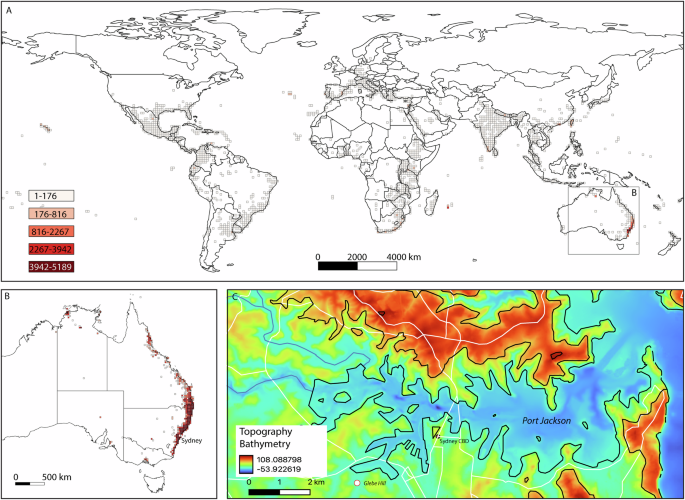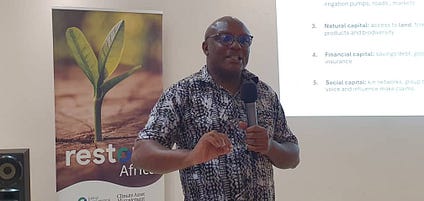Report on Projected Population Growth in Northwest Arkansas and Sustainable Development Goal (SDG) Implications
Executive Summary
A recent projection indicates that the population of Northwest Arkansas is expected to nearly double, reaching approximately 1 million residents by the year 2045. This significant demographic shift presents critical challenges and opportunities related to the United Nations Sustainable Development Goals (SDGs), requiring strategic planning to ensure sustainable, inclusive, and resilient growth.
Core Projection Data
- Geographic Area: Northwest Arkansas
- Projected Population: Nearly 1 million residents
- Target Year: 2045
- Growth Magnitude: An approximate doubling of the current population
Analysis of Key SDG Challenges and Opportunities
The projected population increase directly impacts the region’s ability to meet key SDG targets. A proactive, integrated approach is necessary to address the following areas:
-
SDG 11: Sustainable Cities and Communities
Achieving SDG 11 is central to managing this growth. The primary focus must be on developing infrastructure and services that create an inclusive, safe, and resilient urban environment.
- Development of affordable and adequate housing for all.
- Investment in sustainable and accessible public transportation systems.
- Planning for green public spaces and resilient urban infrastructure.
- Upgrading water, sanitation, and waste management systems.
-
SDG 3, 4, & 8: Social and Economic Foundations
The well-being and prosperity of a larger population depend on robust social and economic systems.
- SDG 3 (Good Health and Well-being): Expansion of healthcare facilities and services to meet increased demand.
- SDG 4 (Quality Education): Increased capacity and resources for educational institutions at all levels.
- SDG 8 (Decent Work and Economic Growth): Fostering an economic environment that creates sufficient decent work opportunities for a growing workforce.
-
SDG 6, 7, & 9: Infrastructure and Resource Management
Sustainable management of natural resources and infrastructure is critical to support a population of 1 million.
- SDG 6 (Clean Water and Sanitation): Ensuring sustainable management of water resources and sanitation services.
- SDG 7 (Affordable and Clean Energy): Scaling up access to affordable, reliable, and sustainable energy sources.
- SDG 9 (Industry, Innovation, and Infrastructure): Building resilient infrastructure to support economic development and human well-being.
Analysis of Sustainable Development Goals
1. Which SDGs are addressed or connected to the issues highlighted in the article?
The article, which focuses on a significant population projection for Northwest Arkansas, directly and indirectly connects to several Sustainable Development Goals (SDGs). The primary issue of rapid urban growth serves as a nexus for challenges and opportunities related to sustainable development.
- SDG 11: Sustainable Cities and Communities: This is the most directly relevant SDG. The projection that the population will “almost double” to “nearly 1 million residents by 2045” is a core challenge for urban planning, housing, infrastructure, and resource management, which are central to making cities sustainable.
- SDG 9: Industry, Innovation and Infrastructure: Accommodating such a large increase in population requires a massive expansion of resilient infrastructure, including transportation, utilities, communication networks, and public facilities.
- SDG 8: Decent Work and Economic Growth: A doubling of the population implies a need for a corresponding growth in employment opportunities to ensure economic stability and prosperity for the residents.
- SDG 6: Clean Water and Sanitation: The demand for water and sanitation services will increase proportionally with the population, making the management and provision of these resources a critical sustainability issue.
- SDG 7: Affordable and Clean Energy: A larger population will require significantly more energy for residential, commercial, and transportation needs, highlighting the importance of scaling up affordable and clean energy infrastructure.
2. What specific targets under those SDGs can be identified based on the article’s content?
The article’s single data point on population growth allows for the identification of several specific SDG targets that the region must address.
- Target 11.1: By 2030, ensure access for all to adequate, safe and affordable housing and basic services. The projection of nearly half a million new residents by 2045 directly implies a massive future demand for housing and services that must be planned for.
- Target 11.3: By 2030, enhance inclusive and sustainable urbanization and capacity for participatory, integrated and sustainable human settlement planning and management. The article’s projection is a form of data used in such planning. Managing the doubling of a region’s population is the very definition of a challenge in sustainable urbanization.
- Target 9.1: Develop quality, reliable, sustainable and resilient infrastructure… to support economic development and human well-being. The projected growth necessitates significant investment in roads, public transport, water systems, and energy grids to support the well-being of nearly 1 million people.
- Target 8.3: Promote development-oriented policies that support productive activities, decent job creation, entrepreneurship, creativity and innovation. To support the influx of new residents, the regional economy must generate a sufficient number of jobs.
- Target 6.1: By 2030, achieve universal and equitable access to safe and affordable drinking water for all. The article implies that water infrastructure must be scaled to serve a population almost twice its current size.
3. Are there any indicators mentioned or implied in the article that can be used to measure progress towards the identified targets?
While the article does not explicitly name any SDG indicators, its core data point—population growth—is a fundamental component of several indicators and implies the need for others.
- Implied Indicator 11.3.1: Ratio of land consumption rate to population growth rate. The article explicitly provides the “population growth rate” component of this indicator by stating the population will “almost double” by 2045. To measure progress towards sustainable urbanization (Target 11.3), planners would need to track the rate of land use change against this population growth.
- Implied Indicator 8.1.1: Annual growth rate of real GDP per capita. The article’s focus on population growth implies that economic indicators, such as the growth of the regional GDP, must be tracked to ensure that economic opportunities keep pace with the rising number of residents.
-
Implied Need for Service-Level Indicators: The projection implies a critical need to track indicators related to basic services to ensure they are maintained or improved as the population grows. These include:
- Indicator 6.1.1: Proportion of population using safely managed drinking water services.
- Indicator 7.1.1: Proportion of population with access to electricity.
- Indicator 11.1.1: Proportion of urban population living in inadequate housing.
The article’s forecast makes the tracking of these metrics essential for regional planners to prevent a decline in living standards.
SDGs, Targets and Indicators Summary
| SDGs | Targets | Indicators |
|---|---|---|
| SDG 11: Sustainable Cities and Communities | 11.1: Ensure access for all to adequate, safe and affordable housing and basic services. 11.3: Enhance inclusive and sustainable urbanization and capacity for… sustainable human settlement planning. |
Implied Indicator 11.3.1: Ratio of land consumption rate to population growth rate (The article provides the population growth data). Implied Indicator 11.1.1: Proportion of urban population living in inadequate housing. |
| SDG 9: Industry, Innovation and Infrastructure | 9.1: Develop quality, reliable, sustainable and resilient infrastructure… to support economic development and human well-being. | Implied: Indicators measuring access to transport, energy, and water infrastructure for the growing population. |
| SDG 8: Decent Work and Economic Growth | 8.3: Promote development-oriented policies that support… decent job creation. | Implied Indicator 8.1.1: Annual growth rate of real GDP per capita. |
| SDG 6: Clean Water and Sanitation | 6.1: Achieve universal and equitable access to safe and affordable drinking water for all. | Implied Indicator 6.1.1: Proportion of population using safely managed drinking water services. |
| SDG 7: Affordable and Clean Energy | 7.1: Ensure universal access to affordable, reliable and modern energy services. | Implied Indicator 7.1.1: Proportion of population with access to electricity. |
Source: arkansasonline.com






